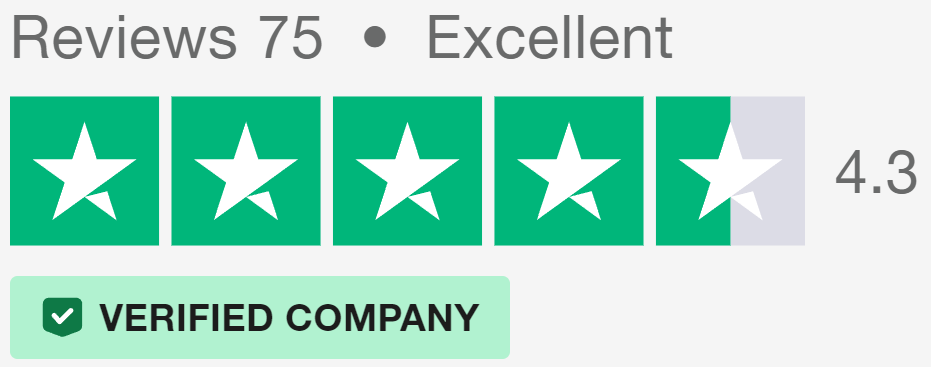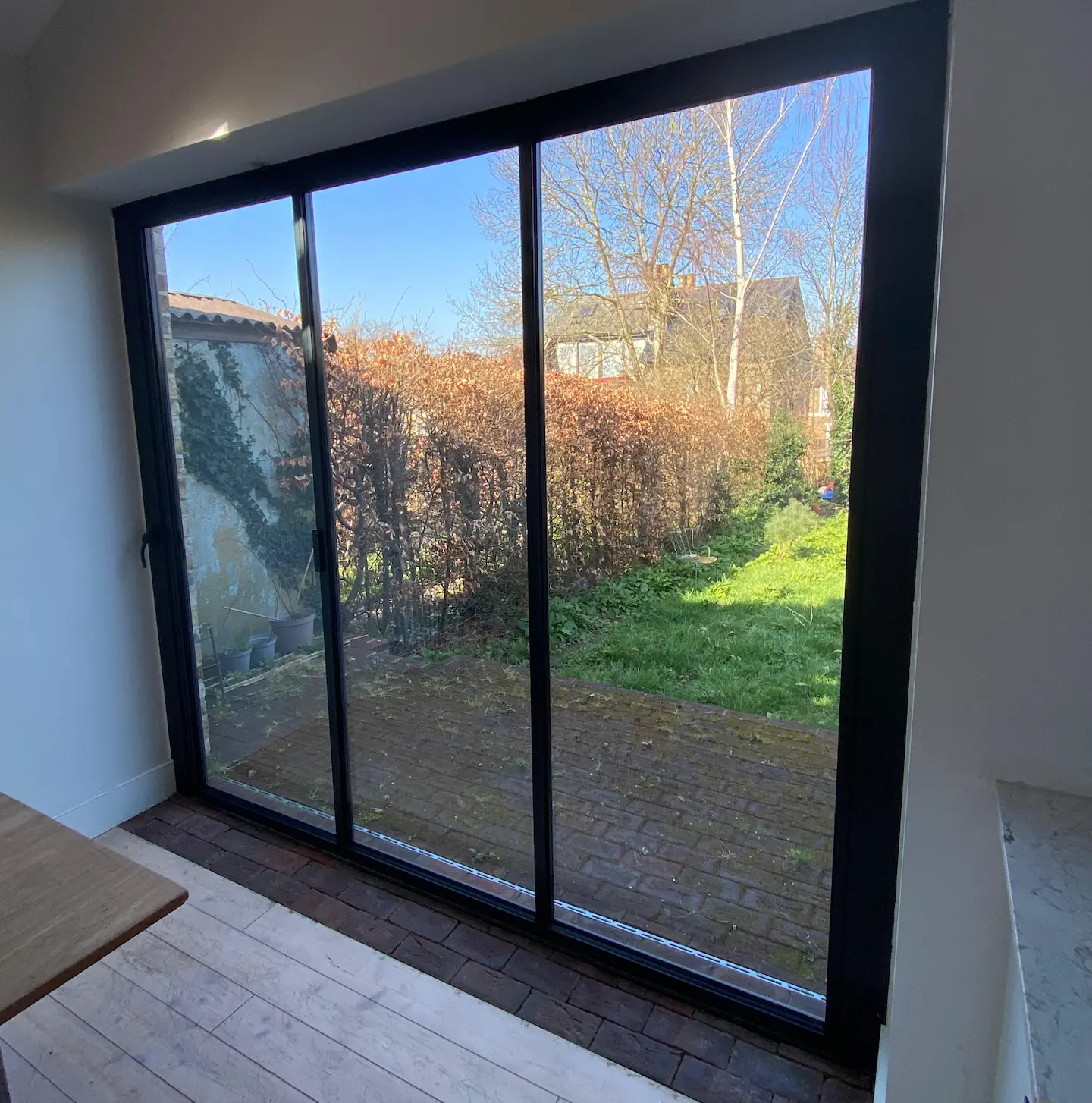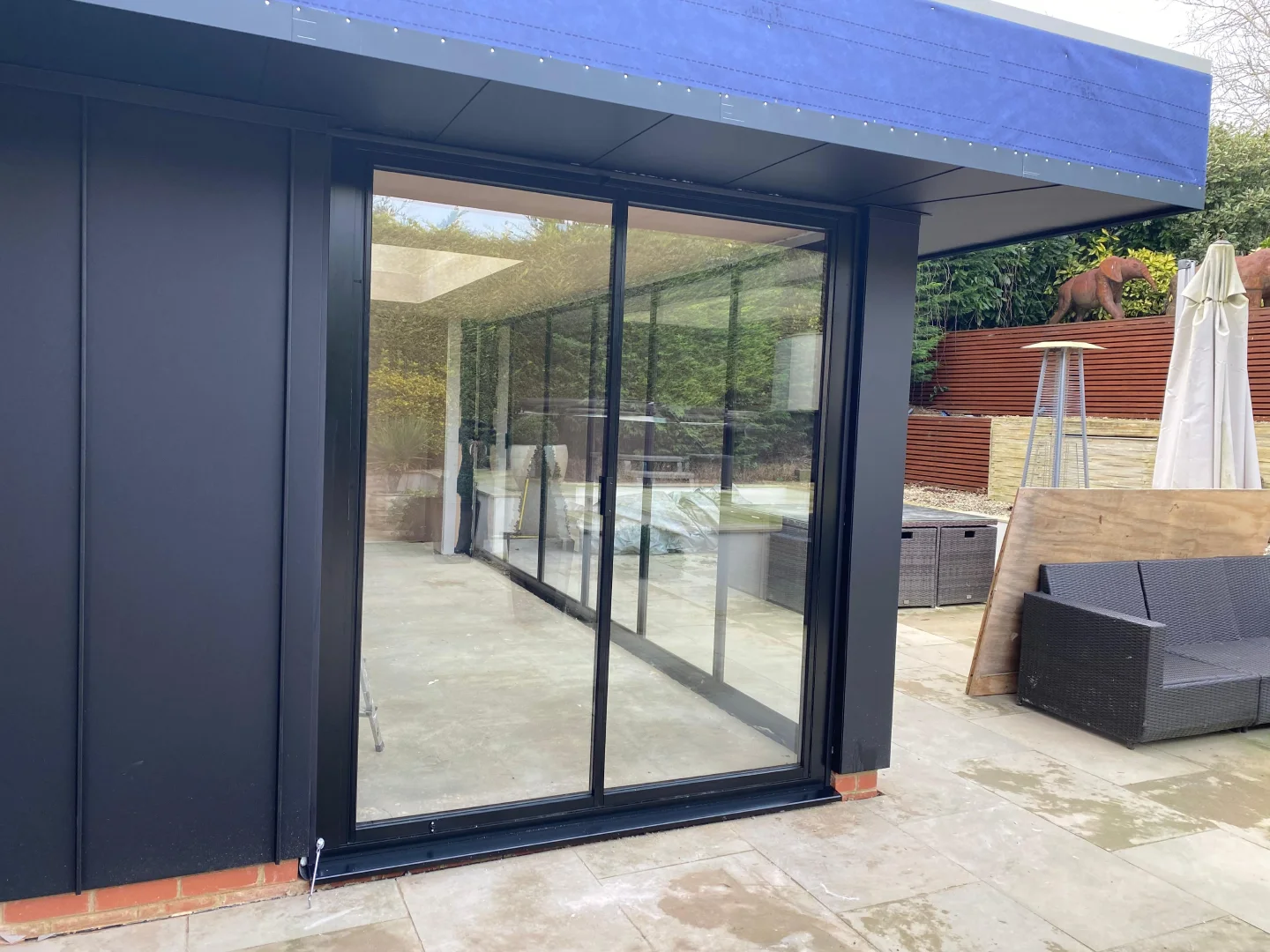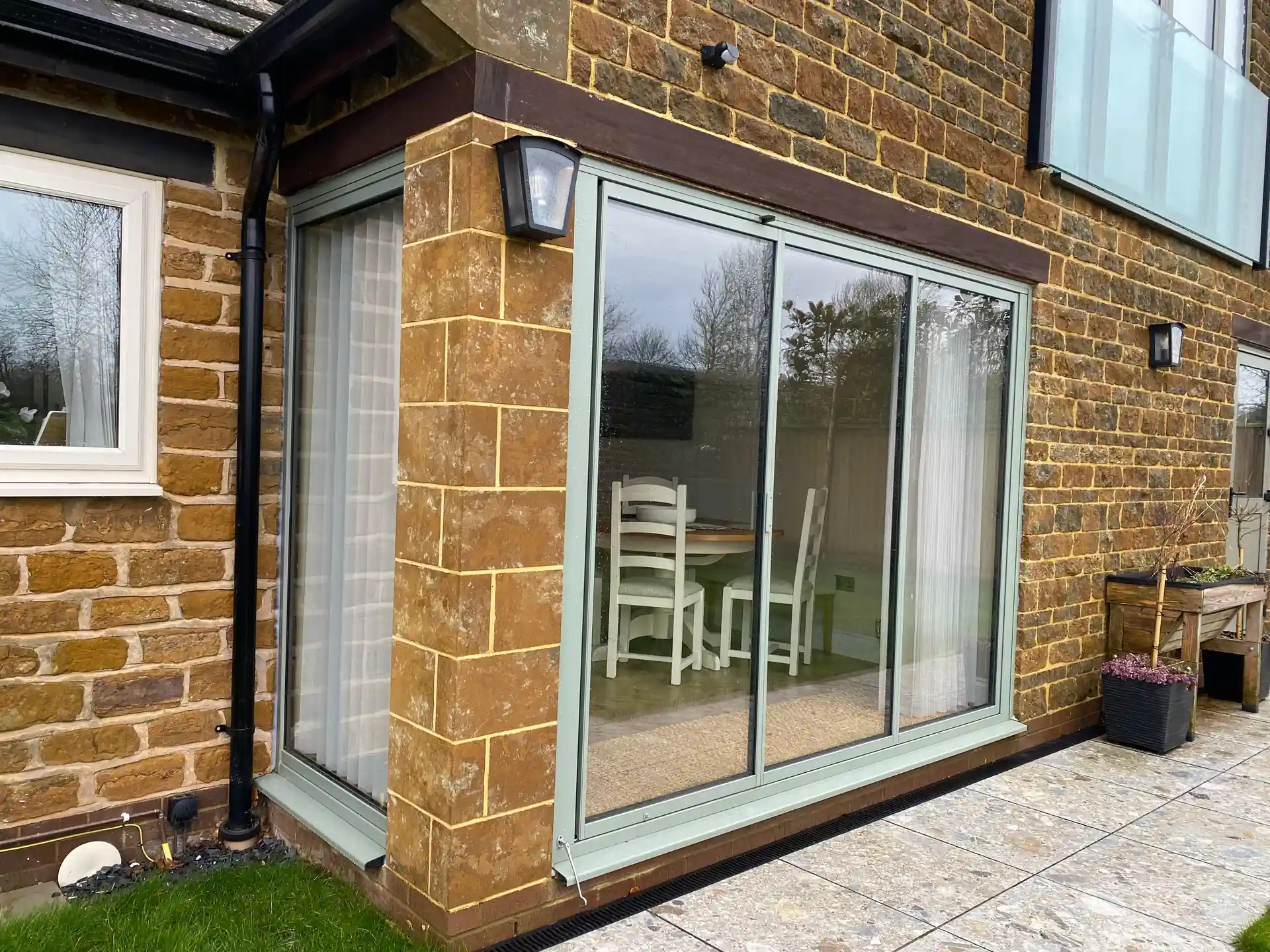Small Bifold Doors: Design Ideas & Tips
Table of Contents

Small Bifold Doors vs Standard Doors
Moving walls that fold away have changed how we think about doors. Small bifold doors pack all the benefits of their larger counterparts into more modest dimensions, making them perfect for homes where space comes at a premium.
Space Requirements
Standard hinged doors need a full swing arc to open, stealing precious floor area in compact rooms. Small bifold doors fold neatly against the wall instead, using a fraction of the space. When fully open, bifold door systems tuck away to roughly one-third the width of a regular door’s swing path.
Most manufacturers recommend leaving a buffer zone next to bifold doors to account for the stacked panels. The minimum opening width starts at around two metres, though some specialist companies make bespoke bifold doors for even tighter spaces.

Opening Styles and Access
Outward-opening small bi fold doors work brilliantly in rooms where interior space is limited. The panels stack outside, leaving internal furniture arrangements undisturbed. The trade-off comes during bad weather – you’ll need enough exterior clearance to fully open the doors without them catching on plants or garden furniture.
Inward-opening small bifolding doors suit areas where external obstacles might block the panels. Garden rooms and balconies particularly benefit from this configuration, though you’ll need to plan your interior layout carefully to maintain clear access to the folding mechanism.
Movement and Flow
Small bifolds offer remarkable flexibility in how you divide and use your space. The panels glide smoothly along the track, letting you adjust the opening size to suit different occasions. Unlike sliding doors that always keep half the entrance blocked, or French doors with their fixed opening arc, small folding doors adapt to your needs.
Track Systems
Top-hung tracks distribute the door weight through the frame above, resulting in smoother operation and reduced wear on the floor guide. Bottom-rolling systems place the main load at ground level, making them ideal for installations where the upper frame needs to be more discreet. Both options work well in tight spaces when properly specified for the door size and weight.
Design Ideas for Small Bifold Doors
Living space takes on new possibilities when walls become movable boundaries. Small bifold doors bring flexibility to compact areas, letting you reshape rooms at will while preserving precious floor area.
Reading Nooks and Quiet Spaces
Creating private corners needn’t mean permanent walls. Small bi fold doors make excellent room dividers, offering the option to close off a cosy reading spot when you want peace and quiet. Light streams through the glass panels even when closed, maintaining an airy feel in your partitioned space.
The position of your furniture shapes how well these spaces work. Placing an armchair at a slight angle to small bifolding doors draws the eye through the glass while establishing a sense of separation. Soft furnishings help absorb sound, particularly useful when the doors divide work and relaxation areas.
Panel Configurations
Two-panel small bifold doors suit narrow openings between rooms, while three or four panels provide wider access when fully opened. Larger configurations might seem tempting, but slim profile folding doors often look more proportionate in modest-sized spaces.
Compact Storage
Kitchen pantries and utility rooms gain improved access through small bifold doors. The folding mechanism allows full entry to storage areas without doors swinging into corridors or blocking thoroughfares. Custom shelving mounted on the door panels themselves multiplies storage capacity – spice racks and shallow storage work particularly well here.
Laundry areas hidden behind bi-folding doors stay accessible when needed yet disappear completely when company arrives. Built-in storage systems coordinated with your door finish create a cohesive look, while magnetic catches ensure panels stay neatly folded when open.
Attic and Loft Spaces
Sloping ceilings pose unique challenges for door installation. Small bifold doors fit neatly under eaves where regular doors would catch, making them ideal for attic bedrooms and home offices. Glass panels brighten these often-dark spaces, while solid lower panels maintain privacy.
Low headroom demands careful planning of tracking systems. Top-hung hardware typically needs more height clearance than bottom-rolling mechanisms, though the specific requirements vary between manufacturers. Some specialist systems combine features of each type, offering smooth operation in restricted spaces.
Installing small bifolds in loft conversions often means working around existing structural elements. Dormer windows and roof supports influence where doors can be placed, but the variety of available configurations usually allows for creative solutions. Matching the door style to original features helps these modern additions complement period properties.
Materials and Finishes for Small Bifold Doors
Material choice shapes how your doors perform day after day. Small bifold doors come in several options, each bringing distinctive qualities to your space.

Aluminium vs uPVC
Metal bifold doors offer slim sightlines and robust construction, making them popular for modern homes. Powder-coated aluminium frames resist corrosion while maintaining their appearance, and their strength allows for larger glass panels than other materials. Small bi fold doors in aluminium tend to operate more smoothly over time due to the material’s inherent rigidity.
uPVC presents a cost-effective alternative without compromising on thermal performance. Modern manufacturing techniques have improved the appearance of uPVC small bifolding doors substantially, with textured finishes mimicking natural materials. The material’s natural insulating properties help maintain comfortable temperatures year-round.
Frame Thickness
Frame dimensions matter more in compact openings than larger ones. Small bifold doors need frames that balance strength with visual lightness – too bulky, and they’ll overwhelm the space; too thin, and they may not provide adequate support. Aluminium’s strength allows for slimmer profiles, while uPVC requires slightly thicker frames to achieve similar structural stability.
Glazing Options
Patterned glass offers privacy without blocking light, particularly useful in ground-floor rooms or bathrooms. Obscured designs range from subtle textures to bold geometric patterns that turn small bifolds into decorative features. Low-iron glass reduces the slight green tinge found in standard glazing, showing true colours more accurately through the panels.
Integral blinds sandwiched between glass panes provide adjustable privacy and shade. These systems never need dusting and won’t tangle or catch in the door mechanism, though they cost more initially than conventional window treatments. The controls integrate neatly into the frame, maintaining clean lines when small bi fold doors are closed.
Triple glazing improves sound insulation and temperature control, though the thicker glass units need more robust frames to support their weight. The extra pane makes little visual difference but adds measurable benefits in noise reduction and heat retention. Small bifolds with acoustic glass help create peaceful spaces even near busy roads.
Hardware Choices
Lock mechanisms deserve careful attention in any door choice. Multi-point locking systems secure the panels at several points along their height, while magnetic catches keep them properly aligned when open. Handles should complement your interior style while remaining easy to grip and operate.
Threshold options range from completely flat to slightly raised designs. Flush thresholds work well for interior small folding doors where weather resistance isn’t needed, while modest upstands provide better sealing against drafts in exterior applications. Some systems offer adjustable threshold heights to suit different flooring levels on either side.
Track systems and hinges in matching finishes create a coordinated appearance. Stainless steel components resist wear effectively but cost more than standard metals, while colour-matched options help hardware disappear into the overall design. Regular lubrication keeps these mechanisms working smoothly regardless of material choice.
Small Bifold Doors for Garden Buildings
Garden rooms deserve proper access year-round. Small bifold doors bridge the gap between snug interiors and outdoor spaces, working particularly well in compact garden structures where every centimetre counts.
Conservatory Connections
Glass-walled spaces need careful planning to stay comfortable in changing seasons. Small bi fold doors provide adjustable ventilation, letting you control airflow precisely as temperatures shift. Tiled floors running from inside to out create visual continuity while offering practical, easy-to-clean surfaces that withstand frequent foot traffic.
When choosing frames for conservatory installations, material durability becomes paramount. Small bifolding doors exposed to direct sunlight need UV-resistant finishes to prevent colour fading and material degradation. Specially coated glass helps regulate temperature, preventing overheating in summer without losing valuable warmth in winter.
Drainage channels built into the threshold prevent water ingress during heavy rain. Some systems incorporate brush seals along the bottom edge, keeping leaves and debris from blocking the running track while maintaining smooth operation.
Summer Houses
Small bifold doors open summer houses to garden views without stealing precious interior space. Panel configurations need careful planning – odd numbers often work better than even, letting you create a single access door for quick entry while keeping other panels closed during changeable weather.
Security features matter more in detached buildings than house extensions. Multi-point locking mechanisms and toughened glass deter opportunistic theft, while internal beading prevents glass panels from being removed from outside. Small bi-fold doors with integral pet flaps allow cats or small dogs access while maintaining security.
Access Planning
Path placement needs coordination with door positioning. Bifold back doors usually work best when approached straight-on rather than from an angle, so garden paths should lead directly to the entrance. Proper lighting along these routes improves safety and usability after dark.

Threshold Options
Low thresholds improve access for everyone, especially important in garden rooms used by older family members or those with mobility needs. Ramped approaches outside help bridge any small level differences, while careful drainage design prevents water pooling around the door frame.
Some manufacturers offer adjustable threshold heights, useful when interior and exterior floor levels don’t quite match. Small folding doors with rebated thresholds provide better weather protection than completely flat options, though they might need a small step or ramp for smooth passage.
Weather protection extends beyond the threshold itself. Overhanging roofs shield the top track from direct rain, while side channels direct water away from the opening. Some systems incorporate discrete drainage ports within the frame, preventing water from backing up during sustained wet weather.
Care in threshold selection pays dividends long-term. Level thresholds might seem ideal, but they need excellent drainage to prevent problems. Slightly raised designs often prove more practical, especially in exposed locations where wind-driven rain poses regular challenges.
Small bifold doors designed specifically for garden buildings often include extra weather protection features. Increased frame rebates, additional seals, and protected running gear help these installations cope with British weather while maintaining reliable operation throughout the year.
Styling Around Small Bifold Doors
Small bifold doors establish strong visual lines in any room, presenting unique opportunities for coordinated interior design. These architectural features deserve thoughtful styling choices that support their practical advantages.
Lighting Placement
Strategic lighting makes small bi fold doors work harder after dark. Recessed ceiling spots washing down the glass panels create subtle reflections, while LED strips tucked into the top track produce a soft glow along the frame edge. Wall lights mounted beside the doors cast gentle shadows that highlight the folding mechanism’s geometric patterns.
Natural daylight patterns change as doors open and close. Small bifolding doors facing east or west benefit from adjustable lighting schemes that compensate for strong directional sunlight. Dimmer switches help balance artificial and natural light throughout the day.
Light fittings near door panels need careful positioning to avoid glare on the glass. Pendant lights hung slightly away from the doors reduce unwanted reflections while drawing attention to specific areas. Floor-mounted uplighters aimed at walls or ceilings bounce light back into the room without creating harsh bright spots.
Window Treatments
Privacy needs vary between rooms and times of day. Small bifold doors often need flexible screening options – particularly in ground-floor spaces overlooked by neighbours. Wave-style curtain tracks allow fabric to stack neatly against the wall, taking up minimal space when drawn back.
Roller blinds mounted within the door frame offer clean lines and precise light control. The mechanism can hide behind a colour-matched pelmet, disappearing when not in use. Some systems include side channels to prevent light leakage, though these might interfere with the door operation if not properly specified.
Panel blinds slide horizontally, matching the movement of small bi fold doors themselves. These systems work especially well across wide openings, with each blind panel corresponding to a door section. The stacking arrangement needs careful planning to avoid clash points when doors and blinds are partially opened.

Colour Selection
Paint choices can make small bifold doors either stand apart or melt into their surroundings. Green bifold doors create natural links to garden views, while darker shades frame the scene beyond like a living picture. Neutral tones on surrounding walls let door colours command attention without competing for visual interest.
Paint finishes need different approaches depending on frame materials. Aluminium accepts powder coating in virtually any colour, creating durable surfaces that resist scratching. uPVC frames come in a more limited but growing range of foiled finishes that mimic painted surfaces while requiring less maintenance.
Coordinating colours across different materials takes careful planning. Small folding doors often combine metal, glass, and surrounding plasterwork – each material reflects light differently and alters how colours appear. Sample panels viewed under different lighting conditions help prevent unwanted surprises after installation.
Mirror Placement
Mirrors opposite small bifold doors multiply views and apparent space. Large mirror panels arranged to match door dimensions create symmetry, while smaller mirrors grouped artfully add visual interest without overwhelming the room. Positioning needs careful thought – reflected glare can become irritating if mirrors face directly into strong sunlight.
Mirrored surfaces near door openings should be firmly fixed to prevent movement when air pressure changes. Frame-mounted mirrors might vibrate as doors open and close, while wall-mounted options stay stable. Safety backing prevents dangerous shattering if accidents occur.
Decorative mirror arrangements draw attention upward, making ceilings appear higher. Small bifold doors paired with overhead mirrors seem to extend room height, particularly effective in spaces with standard-height ceilings. Bevelled edges and antiqued finishes soften reflected light while adding subtle texture to the overall design.
Glass and Mirror Finishes
Mirror types range from standard silver to bronze and smokey tints. Each finish changes how light bounces around the room, altering the mood and perceived space. Antique-effect mirrors soften reflections while adding character, especially appropriate in period properties where small bifolds have replaced traditional doors.
We’d Love to Help You
Vision Glass Doors is a designer, manufacturer, and installer of premium door systems. We are a family run business with over 20 years’ experience and 5,000 installations across the UK.
Our leading range of door systems include Ultra Slim – Slide and Turn Doors, Slimline Sliding Patio Doors and Frameless Glass Doors. Suitable for various internal and external applications, they are applicable to residential and commercial projects.
Click Quick Quote Online for a free quotation within 24 hours. Alternatively, call or email us on 01582 492730 or at info@visionglassdoors.co.uk.

